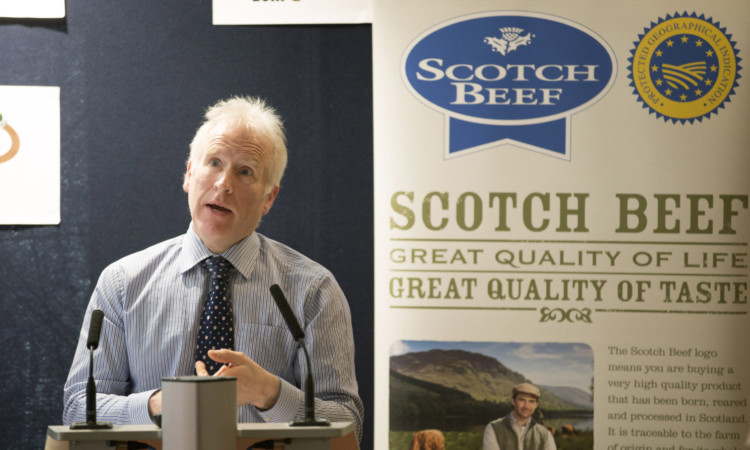The dairy beef sector is the fundamental component missing to support the scale of processing sector Scotland’s beef farmers need and want.
Speaking to a packed room full of farmers at the Planning for Profit roadshow in the Dewars Centre in Perth, agricultural consultant Peter Cook raised the point as he laid bare the challenges facing Scotland’s farmers in a post-Single Farm Payment era.
In preparation for the introduction of the Basic Farm Payment next year he has been delivering the Planning for Profit initiative in conjunction with SAOS, SAC Consulting, QMS and NFU Scotland.
It aims to “inform and inspire” Scotland’s farmers to ensure their businesses are well-placed to operate profitably in the face of significantly reduced support payments.
With concern over “substantially lower” support for beef and sheep breeders mounting, Mr Cook said it was time to take a hard look at the challenges not just to the industry but the individual farm scale.
Looking directly to beef, he said the issue certainly does not seem to be that nobody wants it. “We’ve come through a recession, during which people have been quite willing to pay quite high prices for beef.
“The market wants beef, abattoirs are desperate for the stuff, prices are good in historic terms, but the supply of calves is falling and cow numbers are going down.”
Farmers have to be very careful about adopting the simple wisdom that numbers are falling because cows don’t pay.
“Not all cows are loss makers,” he said. “The fixed costs of a business will remain whether the cows do or not. Beef farmers need to be wary of talking themselves into a hole and allocating costs to cows that should not be attributed to them,” he warned.
Instead, he said, production efficiencies should be improved to help the “entire farm” to pay.
Mr Cook said that, anecdotally, the meetings have shown structural changes are to blame for cropping cow numbers labour, lifestyle balances and the age of the farmer doing the calving much in the same way as for sheep.
Focusing on Scotland’s “sacred suckler cows”, Mr Cook said the country has not lost 12% of its suckler herd but in fact has lost a third of its prime cattle supply.
“Looking back to the 1980s we had a good 120,000 more finishing cattle around the country,” said Mr Cook. Answers from the floor attributed this to the fact prime cattle had to be kept longer to earn the support payments.
“The big effect is the loss of dairy beef,” he added.
“When you investigate the loss of supply to Scotland’s abattoirs, the really big change is not in the suckler herd, it’s the total, or at least large-scale, elimination of dairy beef.”
Back in the 1980s, the trade in young calves under six months stood at around 160,000 per year, he said.
Last year, the figure was down at 30,000.
“Of course, the dairy calf in the ’80s was a totally different article to a dairy calf now the breeding has totally changed, and being able to turn that calf into a profitable beef product is the problem.
“The question now remains: can we have the scale of processing sector in Scotland that we need to market Scotch beef, without that dairy component.
“That is what we are all struggling with,” he said.
“The whole processing sector is too big for the current beef volumes, even if the suckler herd grows to breach some of the difference,” he said.
“How we turn that dairy product into a viable beef product is now an increasingly crucial question, and one that surely we have the technology and genetics to answer.”
